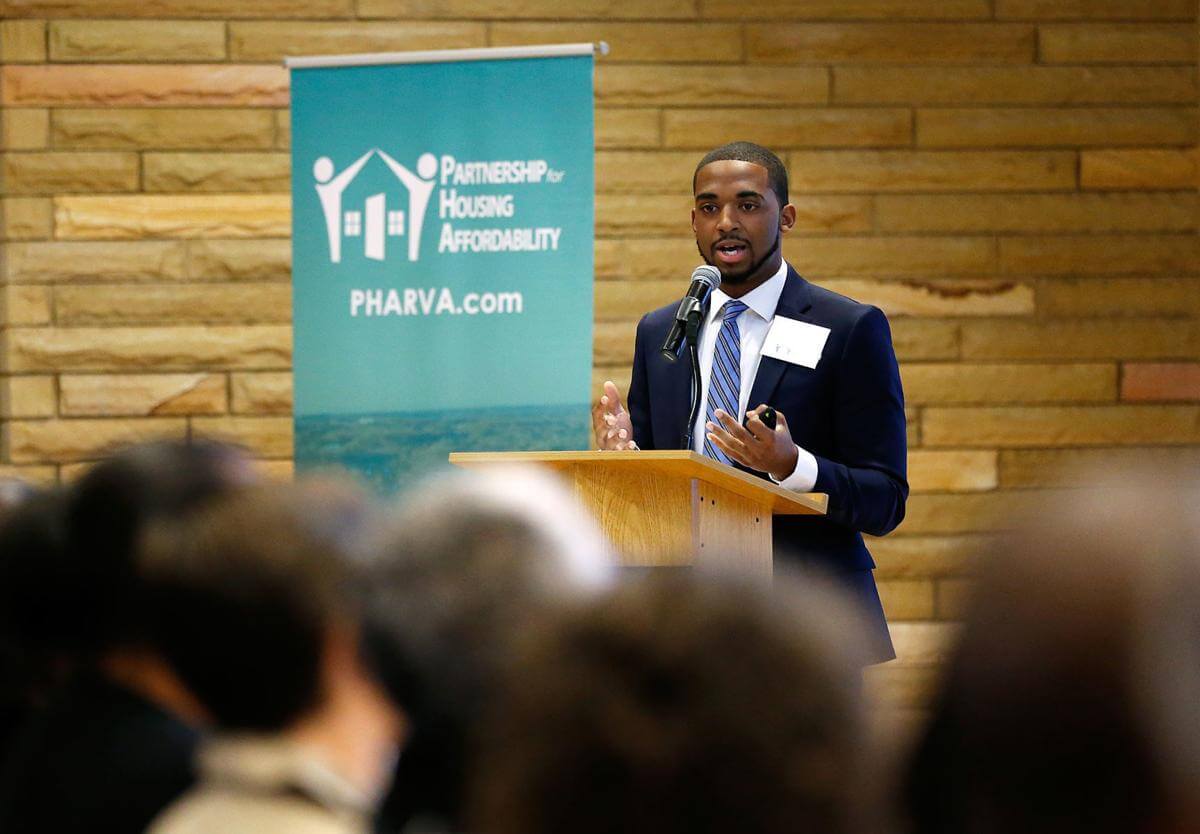
Amid rising rents and home prices, new framework emphasizes regional approach to housing challenges
Median rents in the Richmond region increased by 20% over the past decade, while average income rose by 10%.
As of 2018, 125,000 households in Richmond, Ashland and the counties of Chesterfield, Henrico and Hanover — 1 in 3 — were cost burdened, meaning they spent more than 30% of their monthly income on housing.
The Partnership for Housing Affordability highlighted those and other data points Wednesday as it released a new regional housing framework aimed at helping localities plan to meet the housing needs of the next two decades. Developed over the past 20 months, the framework paints a daunting picture of the region’s overarching housing challenges, like rising prices and a growing senior population, and outlines recommendations for how to begin addressing them before they become insurmountable. The report draws on feedback from more than 1,900 people.
Over the next 20 years, 1,000 new affordable units must be built each year in order to meet the projected demand by 2040. Over the past five years, about 240 such units have been built in the region annually.
“It’s clear the supply needs to increase,” said Jovan Burton, program director for the partnership, which is led by a 17-person board of directors that includes representatives from regional governments and businesses.
Among the recommendations in the framework are promoting the construction of new rental units reserved for families earning less than the region’s median income of $86,400, as well as incentivizing the preservation of existing ones; zoning neighborhoods with the best access to jobs, education and public transportation to allow new apartment complexes to rise; creating new programs to fund maintenance or repair of older homes; and establishing a regional hub to assist prospective or first-time homebuyers.
Drawing on census, mortgage and other data, the framework lays out current and future housing needs in Richmond, Chesterfield, Hanover and Henrico, as well as Ashland.
Most of the existing housing stock that is reserved for people earning less than the region’s median income is more than 50 years old, researchers found. With those homes nearing the end of their useful life, residents who rely on them face uncertainty.
As rents have climbed, so, too, have home values. Across the region, the average sales price rose by more than 20% between 2009 and 2018, according to the framework. In Richmond, where home prices have grown faster than anywhere else in the region, that figure is 56%.
The surge in sales prices is fueling racial disparities in homeownership and wealth. In 2017, 26 homes were bought by white households per day on average. That same year, an average of six homes per day were purchased by African American buyers. For Latino buyers, the daily average was two.
The poverty rate from 2000 to 2017 grew most in Richmond, from 18% to 22%. But in raw numbers, the city’s neighbors added twice as many people in poverty as Richmond during that time.
“The regional approach presented in this framework is crucial because housing needs do not stop at city, county or town boundaries,” said James Napier, chairman of the partnership’s board.
Yet in Richmond alone, there are 3,600 fewer black homeowners today than there were in 2000. In Jackson Ward and Church Hill, where reinvestment has fueled gentrification and displacement, the number of black homeowners decreased by about 30% as the number of white homeowners increased by more than 150%.
Surging housing costs will intensify impending and existing issues in the region. Those include a ballooning senior population living in older housing that is ill-equipped for aging in place and an eviction crisis that has already prompted action locally.
Some work the partnership recommends is already underway. For example, the framework cites the city’s eviction diversion pilot program, established last year after Richmond was found to have the second-highest eviction rate in the country.
Richmond Mayor Levar Stoney said earlier this month that the program has helped 76 families avoid an eviction since October. He set a goal of helping 500 families in the program’s first year.
More than 150 people who work in local government, the private sector, and the nonprofit and philanthropic communities gathered Wednesday at the Eastern Henrico Recreation Center for the framework’s release. Housing advocates heralded the results.
“We’ve been involved in this important work for many decades, and this is the most thoughtful and comprehensive plan of action that I have ever been involved in,” said Greta Harris, president and CEO of the Better Housing Coalition.
Burton will work with the localities to oversee implementation of the advisory recommendations. The partnership will track progress on its website to hold the region’s elected officials accountable.
“We have tremendous work going on right now,” Burton said, “and this framework will serve as a road map to continue to promote those efforts and also improve them throughout the region for years to come.”
